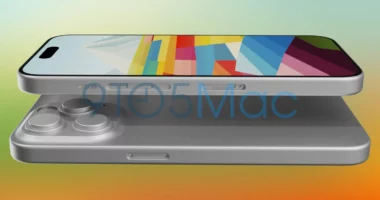Samsung unveiled its third 200MP camera sensor, the ISOCELL HP2, on Tuesday. The sensor has 200 million 0.6-micrometer (m) pixels and an optical format of 1/1.3 inches. This sensor size is utilised in 108MP primary smartphone cameras, enabling high-end smartphone customers to have a high-resolution camera without having to deal with huge camera bumps. The HP2 is currently in mass production.
The sensor uses Tetra2pixel, a sophisticated pixel-binning technology. This enables the sensor to adjust pixel size based on the ambient light. The sensor records 50MP photos at 1.2m (4:1 pixel binning) or 12.5MP images at 2.4m in low-light circumstances (16:1 pixel binning).
The ISOCELL HP2 Will Help Galaxy S23 Ultra Users Take Better photos in Low-Light Environments
For video, Samsung notes, “In order to reduce cropping and capture more of the scene when recording 8K video at 33MP, the HP2 shifts to 50MP mode with a 1.2m pixel size when shooting at 33MP. 8K video captured at 30 frames per second (fps) with a wide field of view and larger pixel resolution can make cinematic-quality footage.”
Dual Vertical Transfer Gate (D-VTG) technology from Samsung will improve colour reproduction and decrease overexposure. As a result, images taken under bright lighting circumstances will be less washed out.
Utilizing all of the sensor’s 200 million pixels as focusing agents, the HP2’s Super QPD function will dramatically improve focusing in low-light settings. Even in low-light environments, the result is faster and more accurate autofocus. Samsung explains that a large number of focusing agents are clustered by four adjacent pixels in order to detect both horizontal and vertical pattern changes.
Reserve your Galaxy S23 Series Pre-Order
Sammy explains, “The new sensor is capable of rapid auto-focusing, even in dimly illuminated environments, due to its use of abundant pattern data and a large number of reference points.” The HP2 will utilise DSG (Dual Signal Gain) for the first time in 50MP mode to improve HDR (High Dynamic Range) images. Smart-ISO Pro enables the camera to capture 12.5MP photos and 4K video at 60 frames per second with HDR.
JoonSeo Yim, Executive Vice President of Samsung Electronics’ Sensor Business Team, states: “The Samsung ISOCELL HP2 utilises Samsung’s cutting-edge high-resolution image sensor technologies and know-how for epic detail. Innovative pixel technologies enable our sensors to go beyond the quantity and size of pixels, giving us a competitive advantage. We will continue to broaden our horizons and strengthen our position in the ultra-high-resolution sensor industry.”
The Samsung Galaxy S23 Ultra and the rest of the Galaxy S23 range will be introduced on February 1 at the upcoming Samsung Unpacked event. The ISOCELL HP1 200MP sensor is utilised by the Motorola 30 Edge Ultra and Xiaomi 12T Pro. Samsung introduced the ISOCELL HP3, another 200MP picture sensor, in June of last year.
The Galaxy S23 Ultra Rear Camera Array Will Include a Pair of Telephoto Cameras with 3x and 10x Optical Zoom Capabilities
In addition to the 200MP primary camera, we expect the Galaxy S23 Ultra to feature a pair of 10MP telephoto sensors. One will include a 3x optical zoom while the other will offer a 10x optical zoom. There will be a 12MP ultra-wide angle camera and a 12MP front-facing selfie camera.
Related Articles:
The Enormous Failure of Apple MacBook Pro
The 18th of January Will See the Announcement of A New Dragon Quest RPG for iOS and Android.
Ring In-Car Security Camera Makes Its Official Debut.









